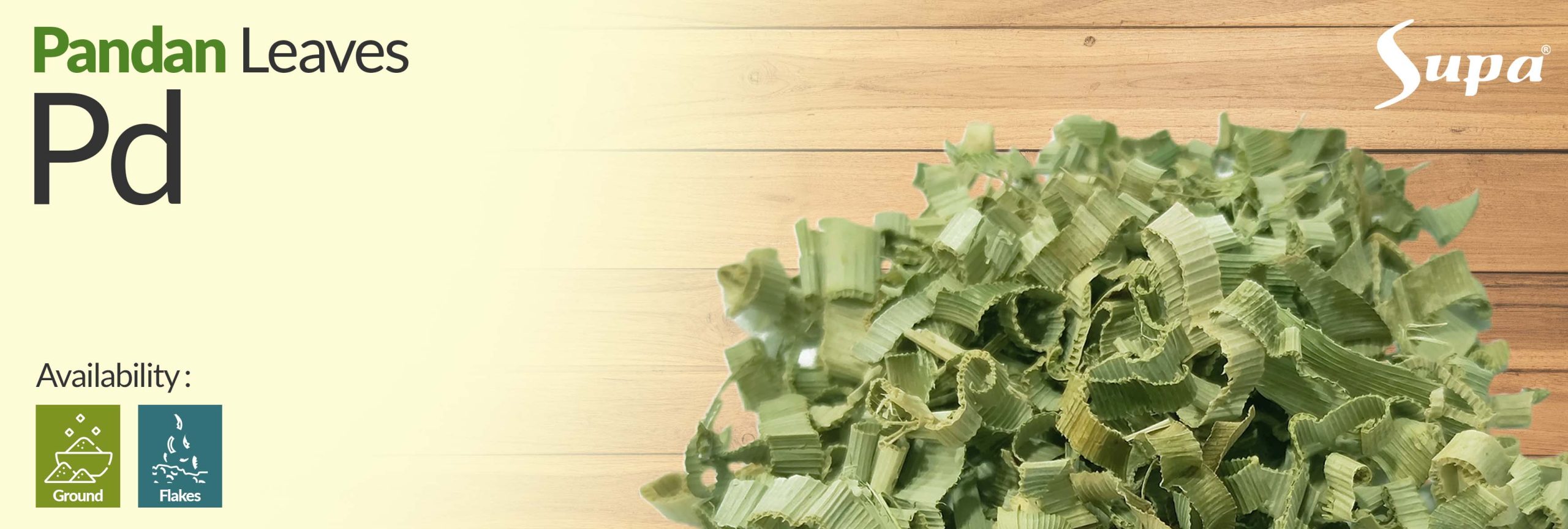
Pandan leaves, scientifically known as Pandanus amaryllifolius, have a rich history deeply intertwined with the cultures and cuisines of Southeast Asia. Originating in countries such as Indonesia, Malaysia, and Thailand, these vibrant green leaves have been cherished for their unique aroma and flavor. Widely used in cooking, pandan leaves impart a fragrant, nutty, and slightly floral note to a variety of dishes, from rice and desserts to beverages. Their distinct essence has made them a staple in traditional Asian sweets and treats, adding both color and depth to culinary creations.
Beyond their culinary applications, pandan leaves have held significance in various cultural practices. In some regions, they have been used to weave intricate mats and baskets, symbolizing local craftsmanship and artistry. Moreover, pandan leaves have been recognized for their potential health benefits. They are believed to possess antioxidant properties and are occasionally used in traditional herbal remedies to address issues such as pain and inflammation.
In recent times, the popularity of pandan leaves has extended beyond their native regions, with their unique flavor and cultural significance gaining recognition on a global scale. From traditional delicacies to innovative contemporary cuisine, pandan leaves continue to be a cherished ingredient, embodying a connection between culinary heritage and modern gastronomy.
Flavor: Pandan leaves have a subtle, sweet, and mildly nutty flavor. The flavor is not overpowering, but it contributes a delicate and pleasant sweetness to dishes. Pandan leaves are often used to enhance the taste of desserts, drinks, and savory dishes alike. Taste: The taste of pandan leaves is primarily characterized by their subtle sweetness, which is not sugary but more of a natural and aromatic sweetness. The taste is not strong on its own, but it complements and enhances the flavors of other ingredients in dishes. Aroma: The aroma of pandan leaves is one of their most distinct qualities. They have a rich, fragrant, and slightly floral scent that is often compared to a mix of vanilla, jasmine, and coconut. The aroma is released when pandan leaves are cooked, steamed, or infused in liquids, infusing dishes with their signature scent.
Flavoring in Cooking: Pandan leaves are prized for their unique fragrance, which is often described as sweet, floral, and reminiscent of vanilla. They are frequently used to infuse flavor into rice, desserts, and various dishes in Southeast Asian cuisines, such as curries, rice cakes, and custards. Coloring Agent: Pandan leaves are also known for their vibrant green color. In some culinary preparations, the leaves are used not only for their flavor but also to naturally impart a green hue to dishes and beverages, such as rice and coconut-based desserts. Aromatic Enhancement: Apart from flavor, pandan leaves are used for their aromatic properties. They are often tied into knots and added to foods during cooking to impart their delightful aroma, enhancing the overall sensory experience of the dish. Rice and Beverage Flavoring: Pandan leaves are sometimes used to flavor plain rice, creating a fragrant and subtly sweet base for various meals. They are also used to flavor beverages, including teas and refreshing drinks, adding a unique twist to traditional beverages. Natural Air Freshener: Outside of culinary uses, pandan leaves are sometimes utilized as a natural air freshener. The leaves' pleasant fragrance can be infused into the air by placing them in living spaces, closets, or other areas, helping to create a refreshing atmosphere.
Origin : Indonesia Botanical Name : Pandanus amaryllifolius Composition : Pandan Leaf Color : Green Moisture Content : Max 10% Shelf Life : 12 Months Loadability : 20 FCL Package : Carton Packing *For more detailed specifications, please feel free to contact us.
Company Profile Brochure PDF


